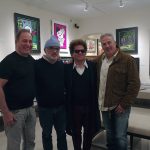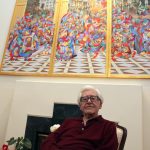The Cosmic Art of Peter Max: How It Captivated an Entire Generation
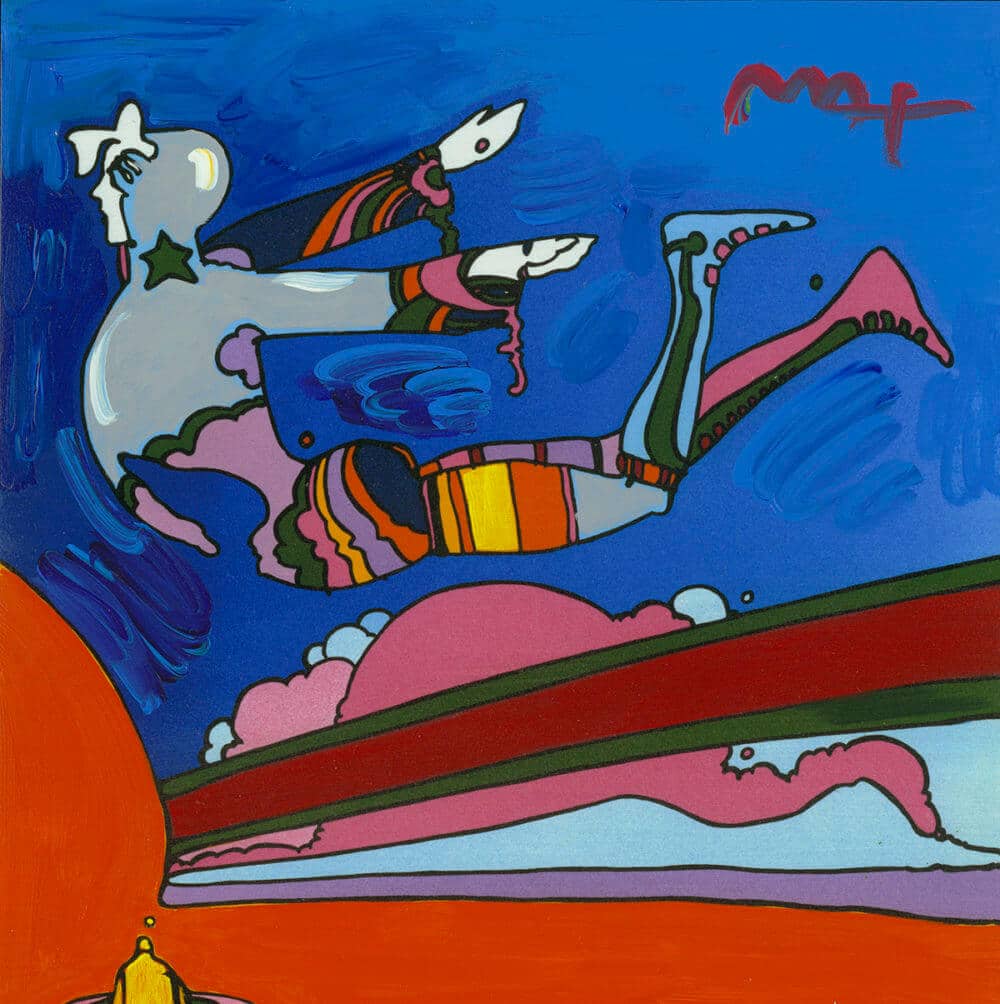
“Cosmic Flyer” (2012), Peter Max
There are few artists more closely associated with the spirit of the American 1960s than Peter Max.
Though originally trained as a realist painter, Peter Max first came to the attention of the art world in the late 1950s and early 1960s for his dynamic, avant-garde work in graphic design. He blended archival photographs with India ink, paint, and other media to create challenging and innovative images, which mainstream audiences loved.
His vibrant designs were soon appearing in commercials, magazines, and advertisements all over the world. The growing Cultural Revolution movement began embracing Max’s work as well, which led to what’s been described as Max’s “Cosmic” period.
It was during this time that Max first started experimenting with new artistic techniques to properly capture the mind-bending perspective of the 1960s.
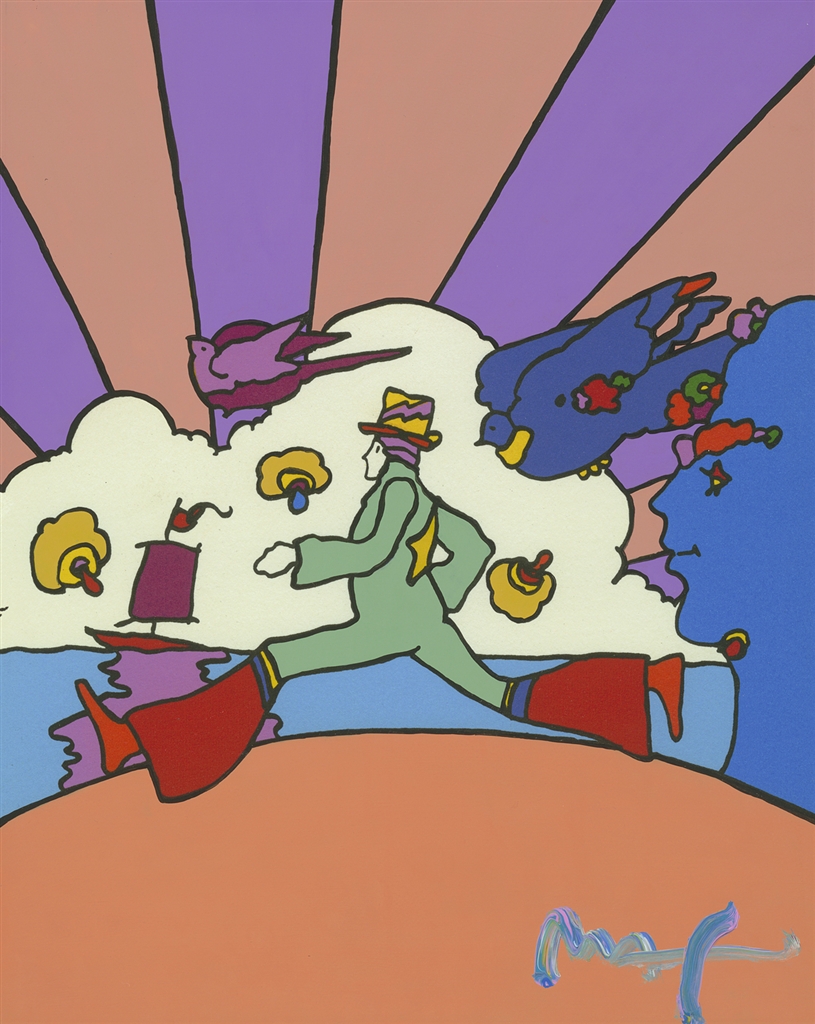
“Cosmic Runner Ver. VI #38” (2008), Peter Max.
THE ORIGINS OF PETER MAX’S COSMIC ART
Max’s artistic fascination with the cosmos began after the artist embraced the tenets of yoga and Eastern mysticism. While studying meditation with Swami Satchidananda, Max encountered an unexpected rush of creative inspiration.
“While the outer cosmos had always been fascinating to me,” Max said, “the Swami revealed to me, through meditation, that a whole universe could be found within.”
His geometric, kaleidoscopic imagery from this era brings to mind the works of Marcel Duchamp and Salvador Dalí, and yet is entirely his own.
Max credits some of the free-flowing energy of his designs from this period to the invention of the Pentel felt-tip pen—a new instrument that allowed him to draw continual, smooth lines without having to stop and dip the pen in ink.
This led to the creation of some of Max’s most organic and playful compositions, which he then brought to greater life with his trademark color juxtapositions.
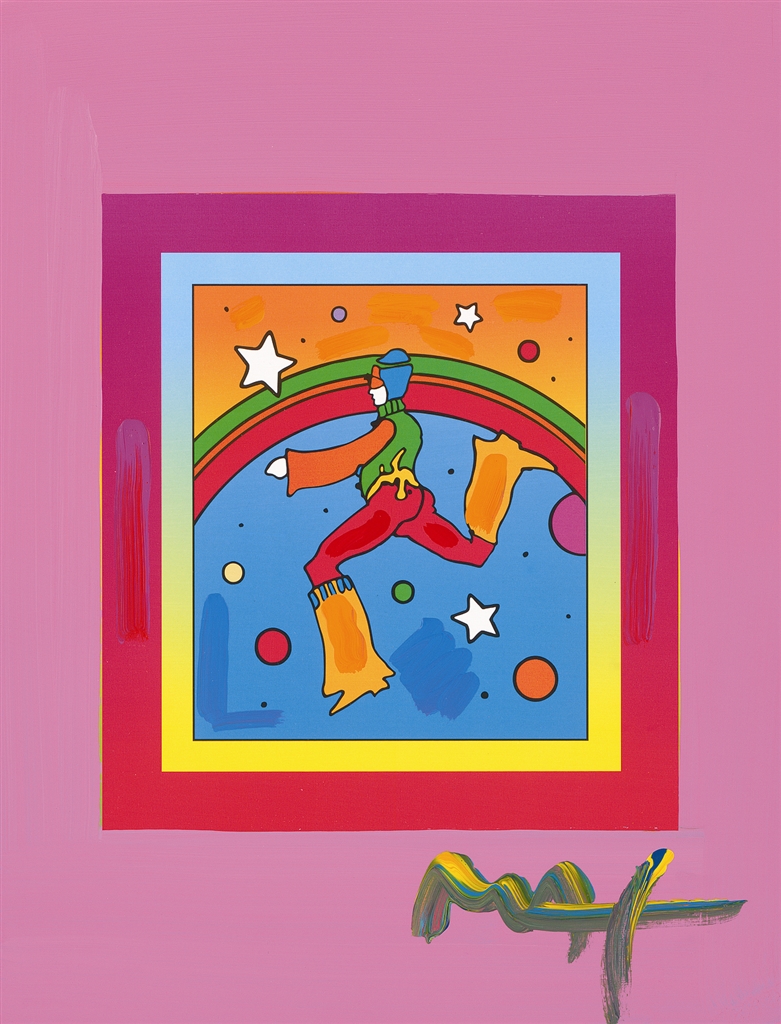
“Cosmic Jumper Detail on Blends” (2005), Peter Max.
While his new mixed-media works were incredibly popular with art lovers around the world, it was the growing advances in the printing industry that brought Max’s cosmic work into the American mainstream.
He experimented with creating bold, color-saturated images on printing presses, resulting in a series of iconic posters that became hugely popular with college students and the American Cultural Revolution of the ‘60s and early ‘70s.
In “The Universe of Peter Max,” Max describes the subjects of his cosmic art:
“My cosmic art subjects were always euphoric: Himalayan sages levitating under a shower of flowers beside snowcapped mountain peaks; faces and flowers exploding into a symmetrical cosmic butterfly; mirrored lakes and mountains with a cascade of stars and planets; flowers in perpetual states of organic growth, blossoms begetting blossoms. My inspiration came from the new youth movement in America and in return spoke to it.”
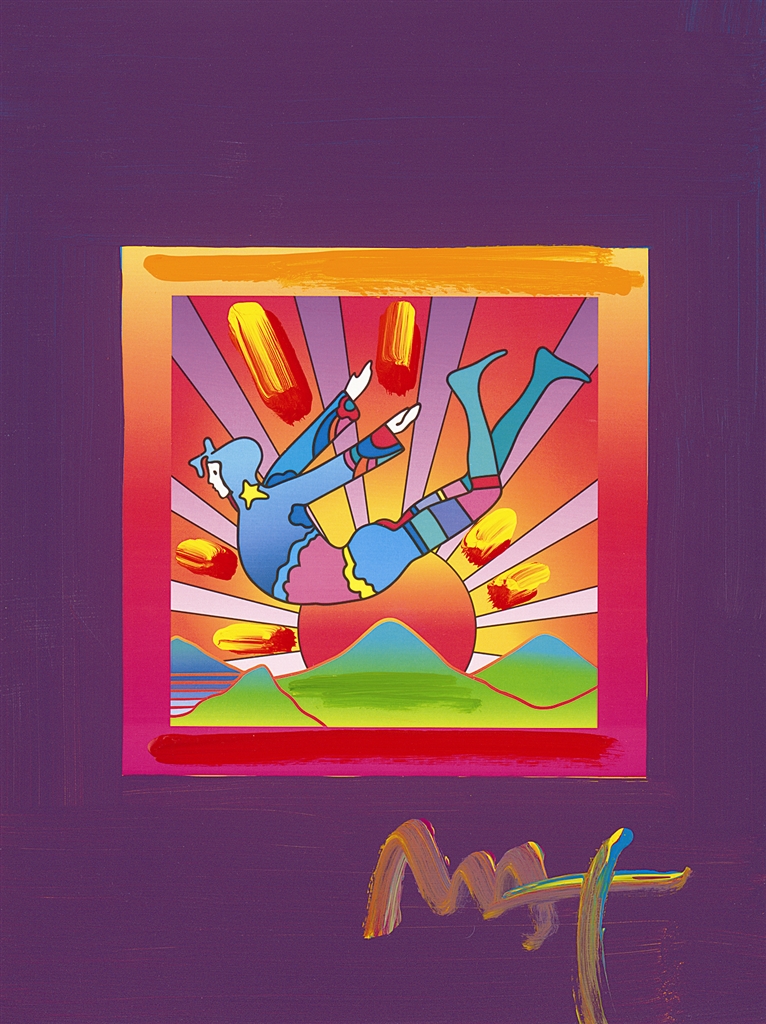
“Cosmic Flyer with Sun on Blends” (2005), Peter Max.
Though Max’s art definitely spoke to the youth movement, there was also a universality to his designs that definitely connected with global audiences. In fact, thanks to the widespread popularity of his cosmic designs, Max was invited to appear on “The Tonight Show” in 1968 and was featured on the cover of LIFE Magazine in 1969.
Max’s euphoric images were further celebrated at an exhibition at the De Young Museum in San Francisco in 1971 called “The World of Peter Max,” which collected some of his best-known paintings, posters, drawings, and lithographs.
While Max later shifted his artistic focus from graphic design to painting, the roots of his popular Neo-Expressionist style can be seen in the colors and abstract imagery of his revolutionary cosmic period.
The Park West Museum in Southfield, Michigan is currently hosting the exhibition “Peter Max: 50 Years of Cosmic Dreaming,” which originated at the Tampa Museum of Art in 2016. The exhibition features 18 of Max’s mixed-media works and 25 of his paintings. For more information on visiting the museum, click here.
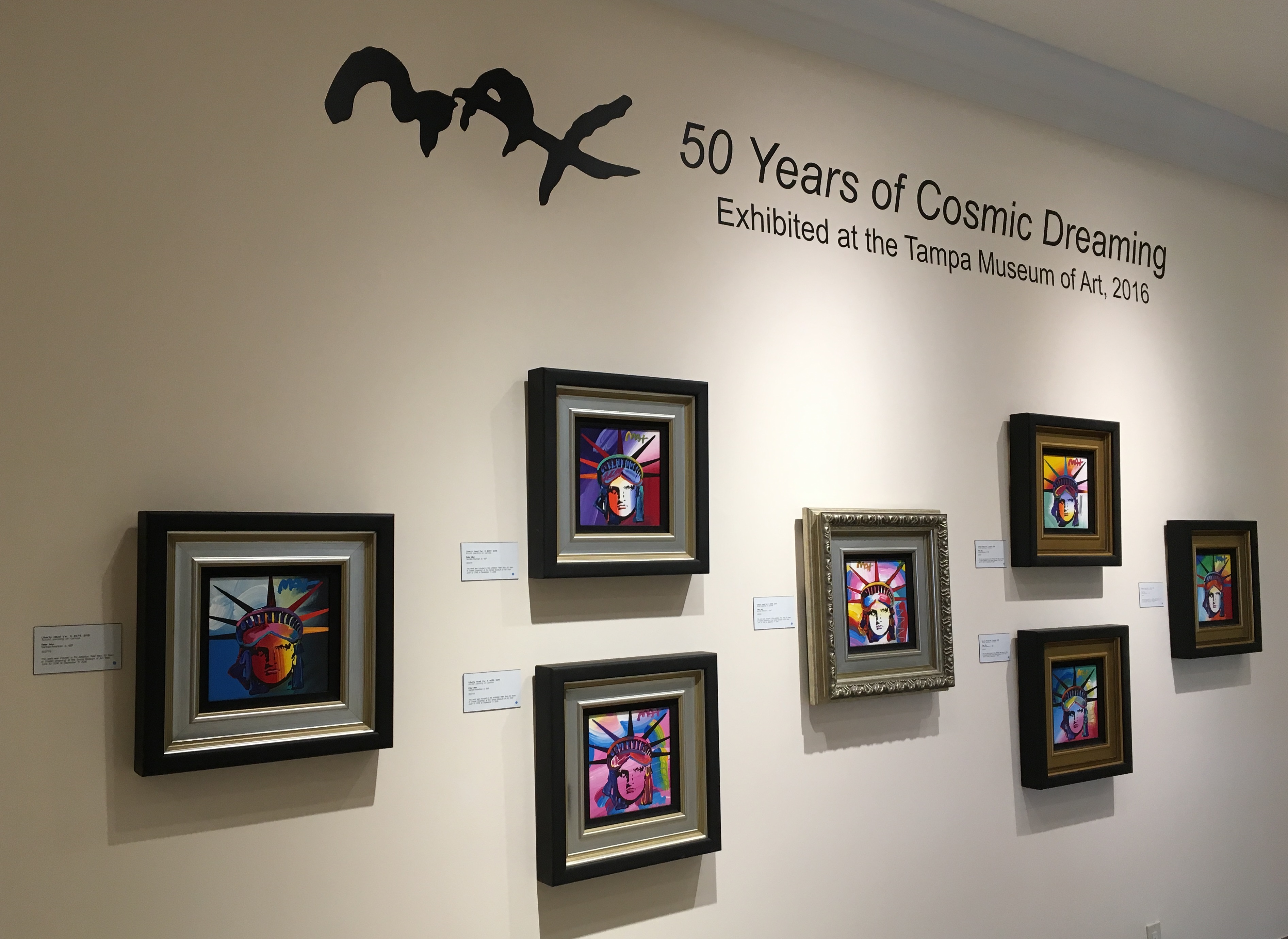
The Peter Max Gallery at Park West Museum.
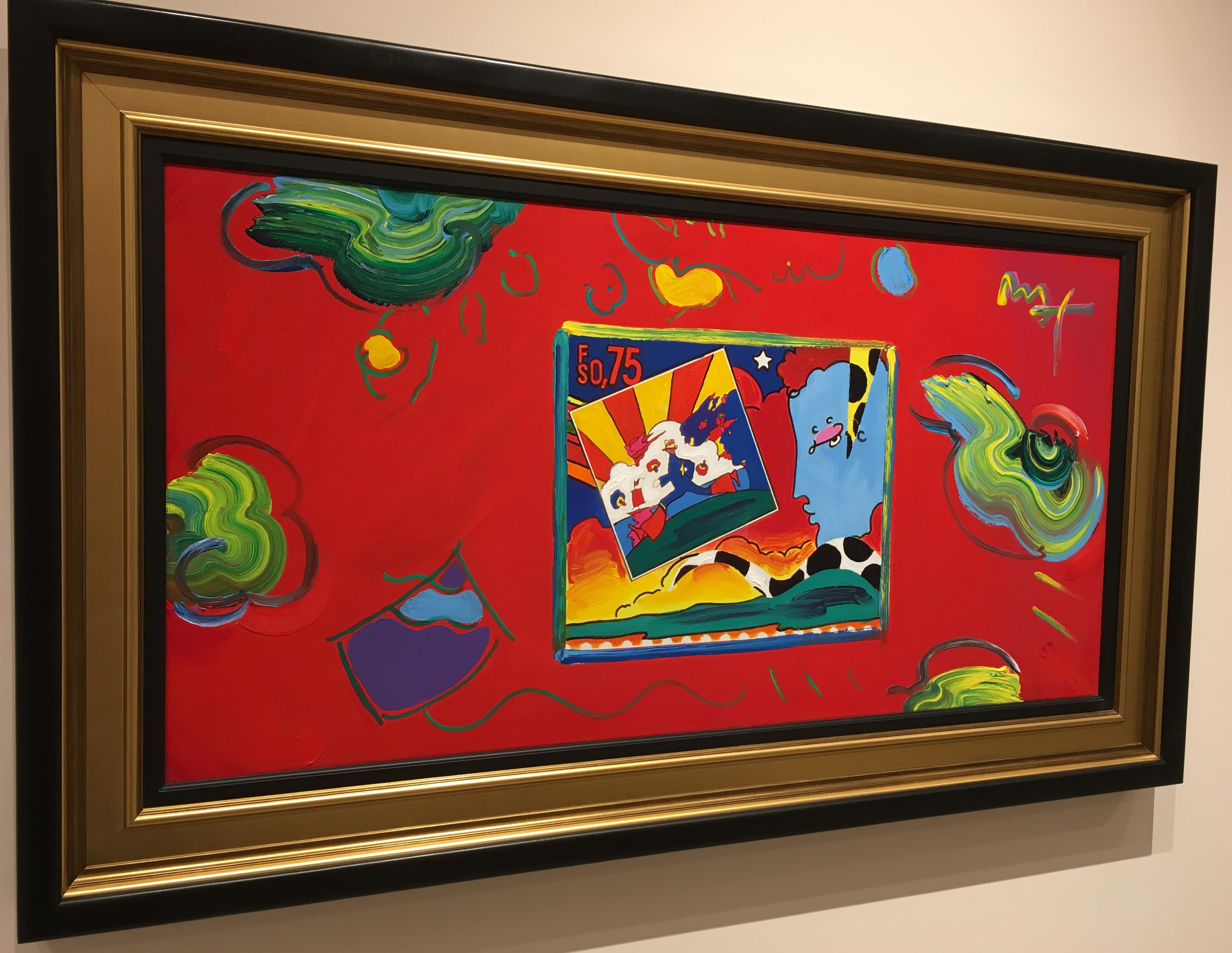
“Cosmic Runner and Profile Ver. I #1” (2008), Peter Max. Currently on display at Park West Museum.
To add a work by Peter Max to your collection, contact one of our gallery consultants at (800) 521-9654 ext. 4 during business hours or email sales@parkwestgallery.com for inquiries after hours.
RELATED LINKS:




